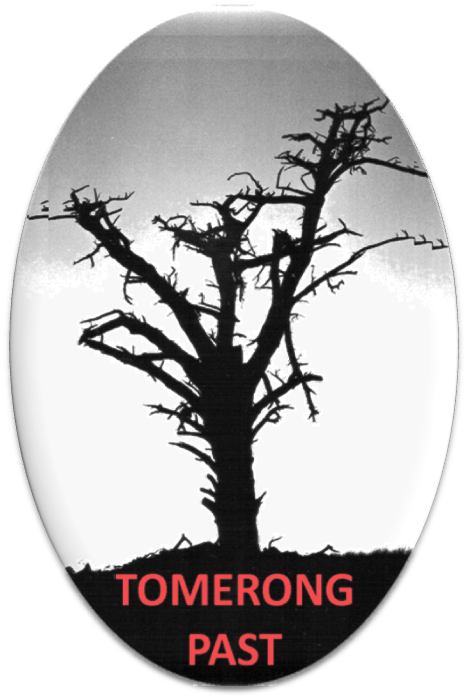WITHIN three years of the first land sale at Tomerong, John Parnell opened a Hotel for the convenience of travellers on the Shoalhaven to Ulladulla Road. This was the first commercial operation in the village and was perhaps the impetus for further expansion in the area. Five years later, the opening of the Post Office and the Public School cemented Tomerong's status, for a time, as the most important centre between Nowra and Milton. The establishment of the General Store in about 1882 and the Creamery in 1895 provided further infrastructure for the growing community. Other business would follow but it wasn't until further growth in the State demanded the exploitation of Tomerong's natural resource, timber, that the status of 'industry' was achieved.. (extract from Tomerong Local History)
Following the opening of the new southern route to Ulladulla in 1857, John Parnell established the Traveller's Rest Hotel to cater for commuters along the route. The Hotel was situated on the north-eastern corner of the Shoalhaven to Ulladulla Road and the South Huskisson Road, now known respectively, as Hawken Road and Pine Forest Road. The hotel was opened on 1 October 1857 and John Parnell advertised it in the 'Illawarra Mercury' as 'The Traveller's Rest, Tamorang, half-way between Ulladulla and Shoalhaven. House of refreshment and accommodation...' with '...excellent paddocks for the accommodation of horses and cattle...' He trusted that '...by strict attention to cleanliness and comfort, he will merit that support which he now solicits'. John Parnell was granted a liquor license on 4 May 1858, his sureties were Charles Cains, a farmer of 'The Dry Run' and Alexander McInnes the younger, a farmer from Numbaa. His license to operate was renewed annually for approximately the next 30 years.
A Ballroom was added to the Hotel in 1866 and a dinner and dance was held on Friday 29 June to celebrate its opening. Tickets sold for 2s 6d single, and 4s 6d a double, with dinner on the table at 6.00 o'clock and dancing commencing at 8.00 o'clock. The Hotel was also the venue for various public meetings on community issues, political rallies, and auctions and was a polling booth for elections.
The Traveller's Rest was to become the centre of entertainment in the district for the small, scattered settlements around the Bay. A ball at the Traveller's Rest generally followed boat launchings at Currambene Creek and sporting events held in the district. A Booth license was granted to John Parnell in January 1868 to sell refreshments at the launch of the schooner Susanah at the ship building yard of Mr Wood at Jervis Bay. Another vessel was launched in September of that year for which Parnell applied for a booth license. These licenses were granted from six in the morning until sunset.
John Parnell was frequently issued a license to sell refreshments on the course at local horseracing. The Tomerong Races were held annually on Boxing Day and meetings were held at the Traveller's Rest for the purpose of appointing Stewards and arranging the programme. John Parnell was the Treasurer of the race committee for several years and frequently entered horses in race events. The races were very popular during the 1860s and 1870s with large numbers coming from all over the Shoalhaven to participate... (extract from Tomerong Local History)
John Parnell retired from the Hotel about 1887 and it is believed that he leased the premises to the new licensee Thomas Mooney. By 1890 the Hotel was showing its age and Sergeant A Sykes, the District Licensing Inspector, brought the condition of the property before the quarterly meeting of the Shoalhaven Licensing Bench in May. In his report to the meeting he stated 'I inspected the premises of the Traveller's Rest Hotel at Tomerong on the 7th March. I found that the walls of two of the public bedrooms, which were composed of slabs had fallen into the paddock, exposing the interior of the room and a portion of the side of the other room. The room was furnished in this state. The ground plates on which the slabs were resting were completely rotten, I should say with old age and the ravages of white ants. The front wall of the main building leans considerably towards the road, and in my opinion is unfit for human habitation. The roof is very low and in some places I could touch it with my head. The stables are old and dilapidated. I believe the licensed premises themselves are in an unsanitary condition altogether. I have slept in the house on several occasions, and have had plenty of opportunities for seeing the state of affairs. I do not consider the house is fit for the reception of visitors, and know for fact that many people have refused to stop there for that reason. A good house would be much frequented. I know that the present licensee has made several attempts to repair the place, but in my opinion it is beyond repair. I think it would be a waste of money to attempt it'.
John Parnell gave evidence to the meeting on the condition of the premises and agreed that should the Hotel be condemned, he was prepared to erect new premises for the present licensee. Thomas Mooney told the meeting that he had attempted to keep the premises in repair; however, they were in too ruinous a state to make much improvement. He expressed the desire to construct new premises to suit himself and if the court would give him two months, he would do so. He requested that the license remain in force for this extra time. This was not agreed to as the house and foundations were in ruin, and the bench felt that two months was not nearly enough time to erect premises to meet the requirements of travellers. After 33 years of operation, the license for the Traveller's Rest was not renewed… (extract from Tomerong Local History)
(The hotel re-opened and had a colourful history until its final closure on Saturday 3 June 1911)
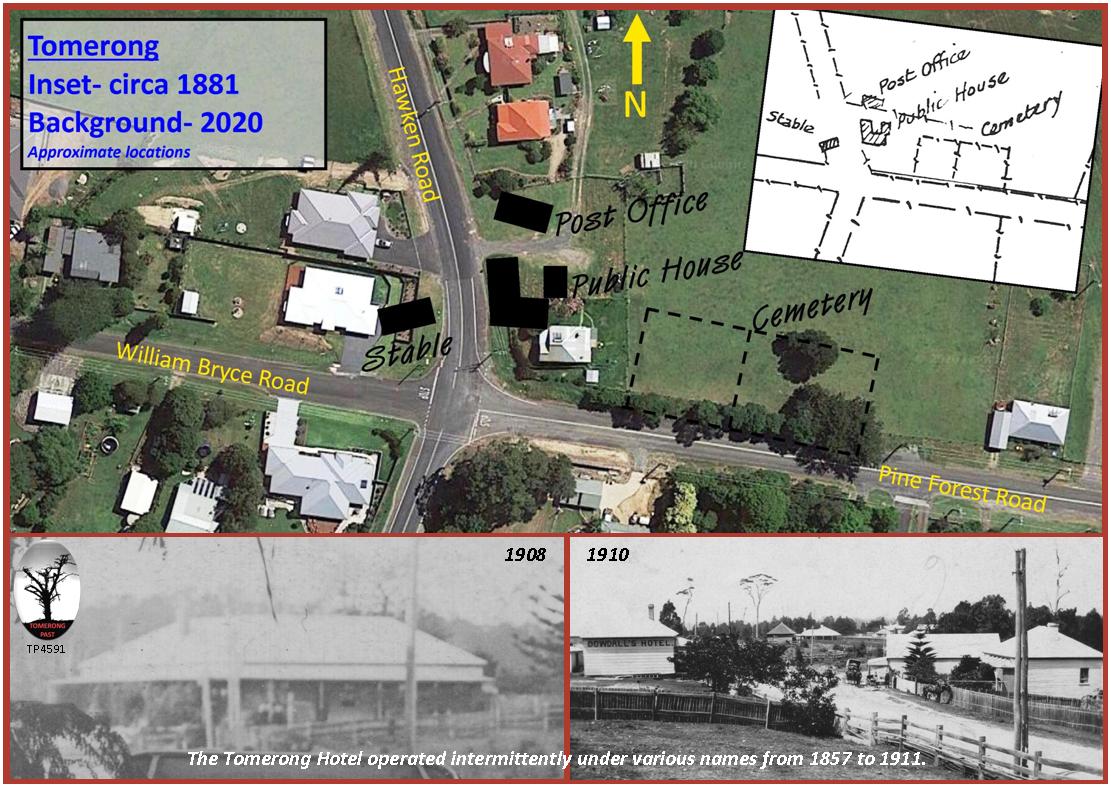
What is thought to be the earliest Post Office in the Jervis Bay district was established in 1843 at South Huskisson (Vincentia). The name of the first Postmaster is not known, although a J Lamond was appointed as Postmaster in 1844. The office received a weekly mail delivery with postage to Sydney costing one penny. It is likely this office closed down at the end of 1851 following the decline in use of the Wool Road.
Attempts to establish a Post Office at Tomerong began in 1860 with the first of several petitions being sent to the Postmaster General (PMG) dated 16 November. The 36 signature petition was drawn up following the establishment of a Post Office at Wandandian, which was under the charge of Mr Walsh. The petition stated that there were only three farms at Wandandian, whereas at Tomerong there were several farms and a greater number of settlers, '...the population is now nearing a large increase by the settlement of persons engaged in timber cutting via Jervis Bay.' For three years prior to this date the inhabitants had been using a mailbag which was collected from John Parnell's Hotel. What became known as 'Parnell's bag' was collected by side bag contractors, first by a Mr Allen, and then by Richard Bartlett who held the contract, but whose son actually did the bag collection.
Another letter and petition was sent to the PMG dated 22 November 1860 further complaining of having to travel seven miles to a Post Office that was three quarters of a mile off the main road. Tomerong was thought to be the better location for a Post Office as it was the place for polling at elections and was closer to Cape St George Lighthouse.
The Postmaster General's office forwarded the petition to Andrew McKenzie, presumably for verification. McKenzie stated in his reply to the PMG, '...the number of householders residing at Tomarong whose names are given is just eight, the number of householders at Wandandian is only three, but they comprehend nineteen adults... (extract from Tomerong Local History)'
When no action was taken to establish a Post Office John Parnell wrote to the PMG on 1 January 1861 advising that he planned 'to pursue the matter (through the member) to the “House of Assembly” after they meet, on behalf of myself and about forty five others.'
As a result of the variety of accents and the different levels of literacy of the early residents in Tomerong, the name of the settlement was spelt several different ways including, 'Tamarang', 'Tomarong' 'Tamorang' and 'Tumarong'. The PMG enquired into the matter asking for the proper spelling; the reply indicated that 'Tomerong' was the spelling on the survey map.
James McLeod Robertson was appointed as teacher to the newly established non-vested National School in October 1862, but his time as both schoolmaster and Postmaster was short lived. On October 16 he took a fall from his horse while travelling to Nowra, hitting his head and sustaining serious injuries. On 29 November he tendered his resignation to the PMG advising that '...my health at present is very bad, and does not promise to mend'. In December, Robertson advised that John Parnell was willing to take on the Post Office with the assistance of his daughters until the appointment of a new schoolteacher, who he said, was sure to undertake the duties to oblige the public. John Parnell was appointed as Postmaster on the 1 January 1863 and his sureties were Alexander and William Bryce of Erowal. The Post Office was run from a storeroom, a short distance from the Traveller's Rest Hotel. James McLeod Robertson died on 7 January 1863 leaving a wife and children.
Matthew Craig replaced Robertson as both schoolteacher and Postmaster, taking up the latter appointment on 1 July 1863. His sureties were James Watt and John Parnell. He continued to operate the Post Office from Parnell's storeroom for some time, but in July 1865, he requested permission to have the office removed to the school ground. In his letter he explains that ' ...the work of the post office I have carried out in a store amongst sundry kinds of storables, and the school ground, one room of which, is fitted up for the post office alone, it is the wish of the inhabitants of this locality that I should ask permission from you that it be removed.' John Parnell opposed the transfer of the office to the school grounds and withdrew his sureties, resulting in Malcolm Mathie of 'Tippet Hill' and James Watt of Tomerong being listed as the new sureties for Craig in July 1865... (extract from Tomerong Local History)
(The Post Office continues to operate today although it has had many moves up and down the street.)
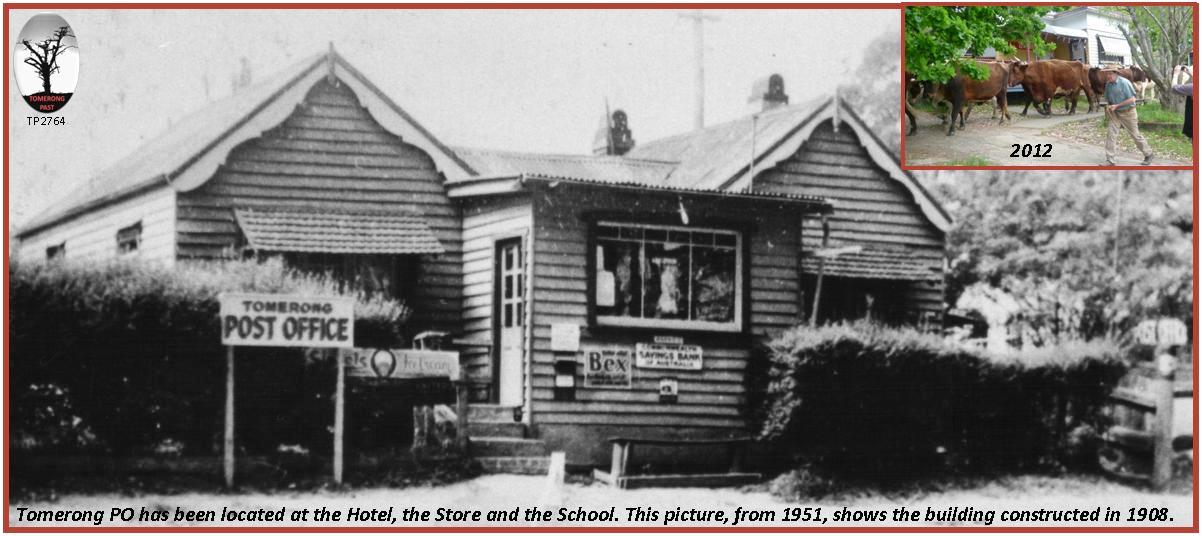
Obtaining provisions prior to the establishment of a general store at Tomerong would have meant a heavy reliance upon travelling salesmen or a slow and laborious trip to Nowra by horse and cart. The round trip would have taken the best part of a day on poorly constructed roads. For many years Daniel Watts & Son, storekeepers of Milton, brought goods into the Tomerong district, so it is not surprising that they were the first to establish store premises in the village. The Tomerong General Store commenced operation about 1882. The store was situated on the north-western side of the crossroads of the Shoalhaven to Ulladulla Road (Hawken Road) and Turpentine Road (William Bryce Road). Daniel Watts had the premises erected and his son Frederick Morris Watts was the first proprietor of the store. In 1884 Watts' store became the booking office for Ryan's coaches which provided a daily mail and passenger service between Shoalhaven and Ulladulla.
In the same year Alexander Bryce sent a request to the Postmaster General that the Post Office be removed from its premises at the Traveller's Rest Hotel and be relocated at Mr Watts' store. He considered that it was inappropriate for it to be run at the hotel. This request was declined as the Post Office was being conducted in a detached building about 20 yards from the public house. A petition signed by a large number of the local population requesting its relocation was also unsuccessful. However, in December 1884 the Postmaster, James Parnell, resigned from the position and Frederick Watts was appointed as the new Postmaster in the following month, with Arthur Balbanny as his assistant.
In 1891 the prosperity of the business was evident when Frederick purchased another store situated at Yalwal, which had previously belonged to the late J Colless. He ran advertisements in the local newspapers to inform the inhabitants of 'Tomerong, Yalwal and surrounding districts that having purchased the stock in the above estate, valued at £930 pounds, at a very liberal discount on wholesale prices, he is now prepared to offer them great bargains in every line. Cash customers will be most liberally dealt with. Call and inspect at the stores at Yalwal and Tomerong. The business at Yalwal will also be carried on in future by me, where all goods will be supplied at the lowest possible rates. Fredk. M Watts, General Storekeeper, Tomerong and Yalwal.'
The business expanded further in 1894 when Frederick purchased the estate of A Heilman, Shopkeeper of Nowra. He advertised that '...I will sell for cash only. And by selling cheap give honest people the margin which the credit system makes them pay to support Ne'r-de-wells and Rogues. I can afford to sell cheap, but can't afford to run a business as a benevolent asylum.'
Assistants listed at the Tomerong store in 1899 were James Jones, storekeeper and Robert Arney, carter. In August of that year Frederick sold the Tomerong business and leased the premises to Matilda Miller. He moved away from the district and at the time of his father's death in 1903 was residing in Chatswood, Sydney. In 1906 he proceeded to dispose of his four properties at Tomerong, a total of 72 acres, and at that time was operating as a General Merchant at Orange. Frederick died in January 1909. Matilda Miller had been an assistant to Frederick for seven years before taking over the business at Tomerong. She soon after married William (Bill) Lackersteen who in turn ran the business and it was known as W Lackersteen's Pioneer Store. Bill and Matilda were assisted by William Edwin Ganderton.
In 1907 the Post Office was removed from the store following the appointment of Arthur Buckland, the local schoolteacher, to the position of Postmaster. Arthur had a small Post Office erected in the grounds of the Public School.
A large number of residents gathered at the Commercial Hotel on 24 July 1908 to make a presentation to Mrs Lackersteen who was leaving the business after many years. Councillor Cyril Blacket made the presentation of a gold bangle to Matilda 'as a token of the respect and esteem in which she is held by the whole community.' William had been appointed as the Clyde Shire Clerk at this time and the couple were awaiting the construction of the new Clerk's residence. Following Bill and Matilda Lackersteen, the operation of the store was taken over by Woodhill & Co. and in 1910 the storekeeper at Tomerong was Joseph Canavan, assisted by Clive Sullivan. It appears that the store building was redeveloped at this time. Photographs taken after 1909 reveal a larger building with the roof pitch running east west instead of the previous north south.
In September 1914 it was reported that Woodhill & Co. had 'formed into a limited liabilities company'. Members of the Woodhill family held all the company shares with Mr C R Woodhill Managing Director. At that time Woodhill and Co. were also operating businesses in Nowra, Brundee and Captain's Point.
Horace Watt commenced working at the store in 1912 at the age of 16 and continued doing so after his father James Watt II and his Uncle Charles purchased the store in 1915. The store was known as Watt Bros. After Edward (Charlie) Watt (also known as 'Digger'), returned from active service in Egypt at the end of World War I, he and his brother Horace purchased the store. Others to work in the store were Dorothy Watt (Horace and Edward's sister), Lyn Condie, Jean Bryce, Bill Wrightson, Mervyn (Tim) McGuire and Bill Bryce for a time in deliveries.
In 1926 the permission of the Clyde Shire Council was requested to erect a petrol bowser at the store… (extract from Tomerong Local History)
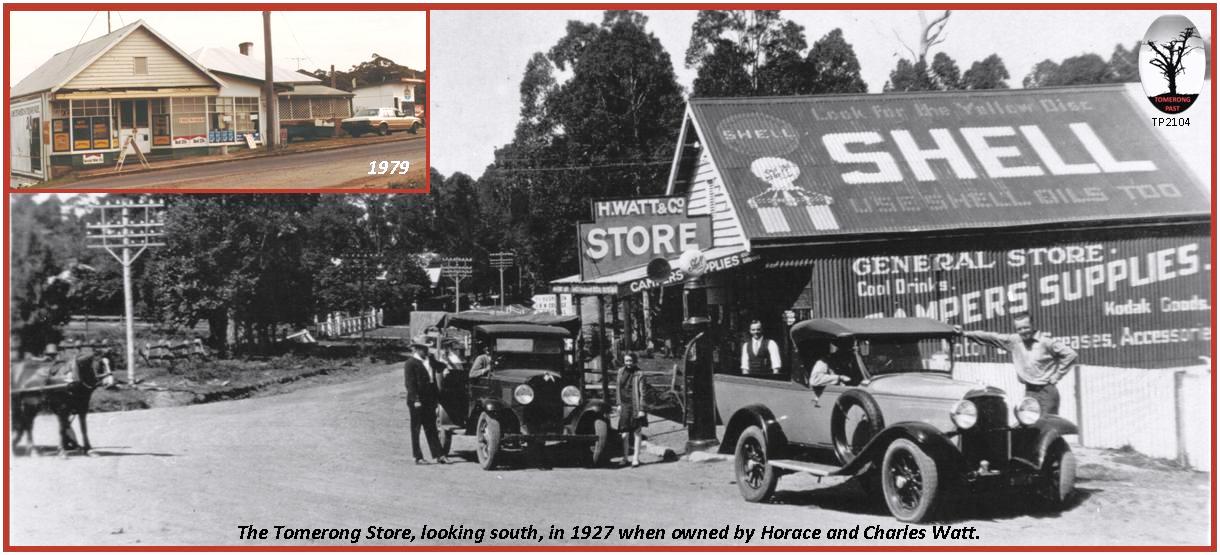
THE east coast of Australia is abundant with a rich variety of hardwood forests. The coastal band of good forests is not great in width but is recognisable around Tomerong with evidence of selective logging, regrowth forests and stands of managed tall straight timber. The most valued commercial timbers occurring include Spotted gum, Blackbutt, Ironbark, Mahogany, Woollybutt and Turpentine. These timbers were used for axe handles, bridge girders, railway sleepers, wharf timber, boat building, mine props and telegraph and electricity poles.
The first timber industry on the south coast was the exploitation of Cedar. Growing from Ulladulla north the native Red cedar is a rain forest tree that grows individually or in small clumps and was found in the moist gullies of the creeks. It is easy to cut, durable, light, resistant to warp, straight growing, seasons quickly and floats. As a deciduous tree, the Cedar's red tips could be located from afar amongst the evergreen woodland. A cargo of Cedar from the Shoalhaven arrived in Sydney in 1811. By 1815 Cedar cutters were active in the Shoalhaven River valley and no doubt stretched further afield as by about 1850 little workable Cedar was left. The cedar getters moved to the forests of northern NSW.
Whilst Cedar cutters may well have been the first Europeans to pass through the Tomerong area, it would have been difficult to extract any cedar discovered as the creek was too small to float it out. The timber would have needed to be pit sawn and carted out.
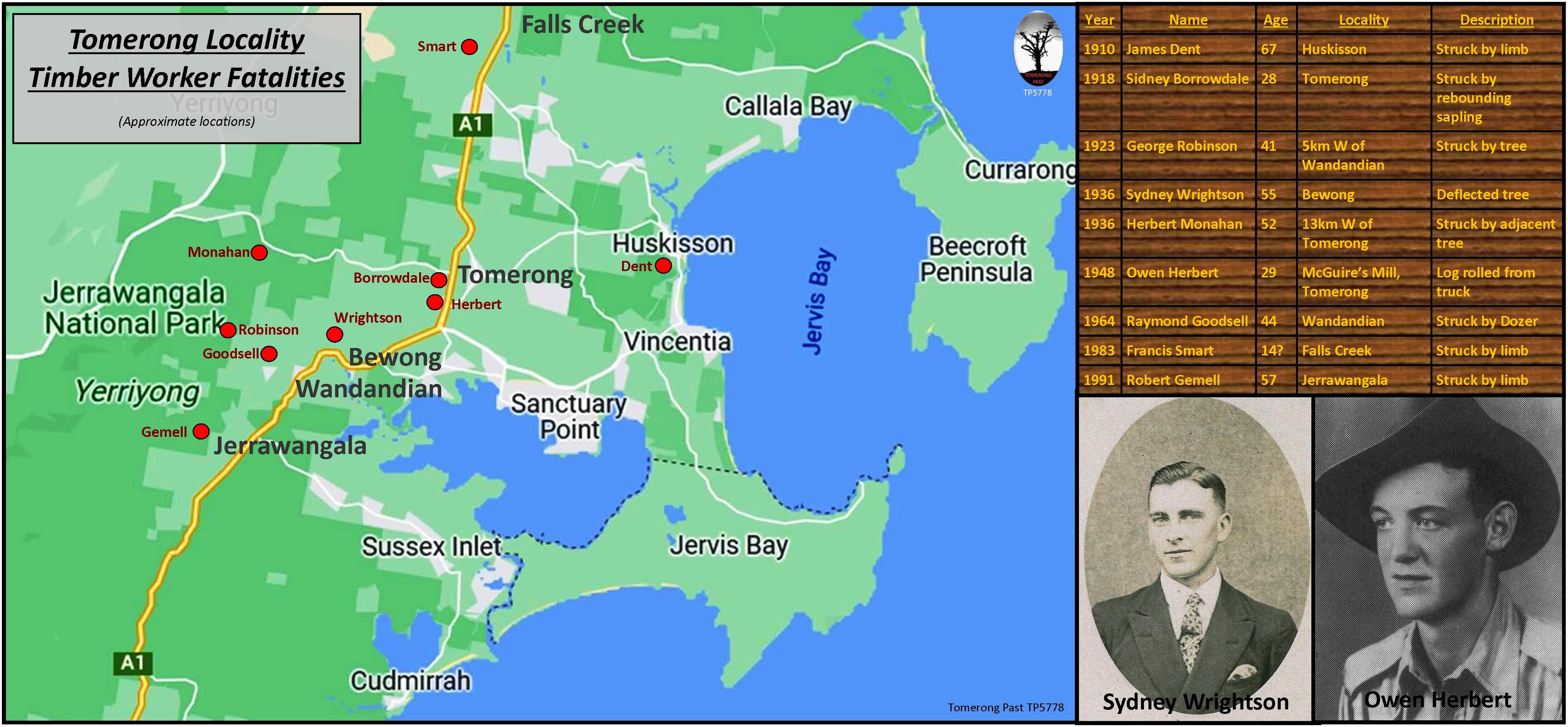
The first settlers of the area had a major impact on the forests. The forest was seen not as a resource but as a hindrance to farming. The extent of the woodland would have appeared so vast that the waste of timber by clearing and ringbarking would probably not have crossed the selector's mind. Good use was undoubtedly made of some timber for building, fencing and fuel but the urgency of constructing a dwelling and getting a crop in to feed the family and earn a living, were paramount considerations. Even though some timber may have been marketable, the distance to those markets may have made the process unprofitable.
George Dent was born in Hunter Street, Sydney in 1822 and spent some years as a sawyer and gold prospector before commencing his shipbuilding yard on Currambene Creek. As early as May 1861, the 'Illawarra Mercury' reported that Dent was 'looking' for timber for the Sydney market at the Creek. He probably didn't need to 'look' for long. Farmers from Tomerong would have been only too happy to have an outlet for their timber almost on their doorstep. In the late 1860s the Sydney firm of Goodlet & Co. and later Goodlet & Smith were extracting Spotted gum and Woollybutt from the district, shipping it 'in the log to Sydney by sailing vessel'. These ventures were the seeds of an industry that would come to dominate the area and sawmills would soon follow.
In 1875 timber-cutting licenses were granted to A Mathie, J H Parnell, J Parnell, J Pepper, T E Pepper, J McGuire and D King. Every person who was engaged in the felling, sawing, splitting or removing of timber from Crown Lands was required to have a license. The tools of these cutters were the axe and the crosscut saw. They would select a tree for its type of timber and the ease of access. Surveying the shape of its crown and any lean, they would cut a belly scarf in the front of the tree using the axe and aim the scarf in the direction of the required fall. Moving to the other side of the tree they would use the crosscut saw, sometimes called a 'peg and rake' saw, to cut through to the scarf using wedges to keep the tree off the saw. The saw had two long teeth for cutting and a smaller tooth to rake the sawdust out of the cut. If the wind caught the tree before the saw was through to the scarf the stump could 'slab up' leaving a vertical split. The most danger was caused when the falling tree hit others nearby. These trees could whip back and strike unsuspecting cutters. Charlie Kells and Cecil Thomason were felling a tree one day; ''..Cecil got behind a tree and I got behind another, waiting for it to fall. Something told me to look up and there was a great big limb slithering down the tree that I was behind. I remembered a chap telling me the same thing had happened to him and he layed on the ground. So I leapt straight on the ground and all I got was a bit of scratch on the back of the neck. Cecil rushed over to see if I was alright because it frightened him too.'
Trees with buttress roots, unusually shaped stumps or of poor quality at the stump would be cut further up. This would make them more manageable to transport and easier to mill. The timber cutter would climb the tree using boards inserted in a hole in the tree cut by an axe. If only one board was used the cutter would cut a scaffold hole for the board and alongside this a toehold. After inserting and mounting the board a second scaffold hole and toehold would be cut higher up. The cutter would drive his axe in high and using the lower toehold and holding on to the axe he would move the board to the upper scaffold hole. This would be repeated until the appropriate height was reached for the cut. Not all the selected trees would be suitable for milling. Some trees have centres of decayed wood or are hollow. Others have white ant infestation, gum pockets, gum rings or water marks which can make the timber unsaleable.
Prior to the establishment of sawmills, timber was split or pit sawn. The pits were often a dry creek bed and the logs were rolled across supporting timbers so that one man operated above and one man below the log. The saws were often 8 feet long to permit room for the log and the sawing action. They cut on the down stroke only.
Bullock teams were used to snig (drag) the log to the mill. After the introduction of log trucks, bullock teams were used to drag the logs to log dumps. Local bullock drivers (also called bullockies or teamsters) included: John (Jack) Andrews, Freeman Hart, Clyde Garrett, William Parnell, Frederick Taylor, Ronald Holland, John Henry Parnell, George Walker McGuire, Reuben McGuire, William Andrews, Samuel Gould, Bert Parnell (Bert called himself an Oxen Conductor!), Peter McGuire, Bert McKinnon, Alan Watt, Joseph Barham, Reg Ison, Reg McGuire, Fred Thomason, Ernie Pepper, Mick Parnell and Bill and Ian McKinnon.
Teams usually consisted of twelve to fourteen bullocks, but could be made up of any number depending on the load to be pulled. Pairs of matched bullocks were coupled together using a wooden yoke secured to each bullock by an iron bow. The yoked pairs were connected by a chain, which ran from a central ring on each yoke down the centre of the team, thus keeping them together. Yokes were made from different kinds of timber, but in the Tomerong area, River oak, a tight grained timber, was considered the best for this purpose. Ken McGuire's father Peter was one of a few locals who made their own yokes, but others had Fred Thomason make up their equipment. The bullocks pulled with their shoulders on the yoke. The largest but shortest bullocks, the polers, were closest to the log, and the more active and longer legged steers were in the lead. Bullocks of differing experience and graduated size were located between with the young at the front and the stocky at the back.
A report in the 'Shoalhaven Telegraph' of 1894 gives an indication to the possible hazards of breaking in a bullock team. 'On Saturday last a rather strange accident happened at Tomerong, resulting in the loss of a fine young bullock the property of Mr Thomas Crawford. It appears Mr Crawford was breaking in the animal, and yoked it for the first time with one of his old workers. On being yoked the pair bolted, but had not gone far when the young bullock turned a somersault, breaking its neck and nearly causing the death of its mate. The owner of the animal although cheated out of a promising worker, has had his cask filled with prime meat'.
Whilst the bullock teams could snig the logs for short distances, a timber jinker was required for long hauls. Timber jinkers could carry very large logs up to seven feet in diameter. Jinkers had two very large wagon-type wheels, six or seven feet high with the axle bent to a crank shape and the bend turned upwards. The wheels straddled the log and it was loaded on to the jinker by a jack attached to the crank and secured with chains. The other end of the log was left trailing. Alternatively two grooves could be made in the earth on either side of the log. The jinker wheels were positioned either side of the log in the grooves and the log was chained to the jinker. When the bullocks pulled the jinker its wheels rode out of the grooves and the log was lifted clear of the ground. For even longer distances or larger logs, two jinkers could be connected to either end of the log. The back jinker was connected to the first by a pole log between the two, which could be chained to the front jinker. Firstly the back jinker pole is tipped up into the air so that the axle moves lower towards the log. The log is chained to the back jinker and the bullocks are used to pull the pole down. As it is pulled down the back of the log lifts off the ground. The pole is then chained to the front jinker.
Charlie Kells remembers Freeman Hart as a laid back teamster. 'Freeman Hart was a funny old man. “Come on boys, come on!” he would say to his bullock team, but they would have stopped way back!' Peter McGuire told his son Ken, 'He'd (Freeman) come in to the mill and he'd be talking, then his bullocks would arrive about five minutes later.' Like many locals Freeman combined the timber industry with work on his farm. He had a patch of watermelons and he knew some timber cutters working on an adjacent property were stealing them. So one day Freeman cut up some melons and took them down to the cutters saying, 'I thought I'd save you blokes the trouble!'… (extract from Tomerong Local History)
The Timber Industry in Tomerong would be the major employer in the village for almost 100 years. The industry centred on the Mills on the Princes Highway south of the village on what is now called Kells Road. The families involved in the local industry included members of the following families; Allen, Alister, Andy, Andrews, Bailey, Bainbridge, Barham, Ball, Bayly, Bellete, Bettens, Blacket, Borrowdale, Bradney, Bratz, Brown, Brownett, Bryce, Carriage, Caruana, Casey, Chapman, Clissold, Craighead, Croft, Cochrane, Condie, Corby, Coulon, Crittle, Cruse, Davis, Dent, Dodd, Donovan, Duncombe, Dunshea, Elyard, Ebzery, Edwards, Egan, Emblem, Field, Flood, Flynn, Ganderton, Gardiner, Garrett, Glanville, Golding, Goodes, Goodlett, Goodsell, Gould, Gray, Green, Griffiths, Harrison, Hart, Hawken, Hayward, Henry, Herbert, Heslin, Hockey, Hoffman, Holland, Hooper, Hutchinson, Ison, Jarret, Jennings, Johnston, Jones, Kells, Kelly, Kemp, Kennedy, Kenny, Larritt, Lee, Louttit, Lynch, Maber, Macey, Martin, Massey, Mathie, May, McCarthy, McCauley, McGuire, McKinnon, Mison, Mitchell, Mobbs, Monahan, Monteith, Montgomery, Monty, Mosley, Moxon, Murray, Nelson, O'Brien, Odmark, Orford, Pantlin, Parker, Parnell, Parsons, Payne, Peake, Pepper, Petrie, Phillips, Price, Prosser, Rankin, Reid, Richardson, Rix, Robert, Robinson, Rolfe, Roulston, Ruming, Ryan, Scaybrook, Schroder (Schroeder), Schubert, Schutz, Scott, Sebbens, Sheather, Sieverwright, Solway, Smith, Spring, Stewart, Suffolk, Sutherland, Swadling, Taylor, Thomason, Thorman, Usher, Wadsworth, Walker, Wallace, Walsh, Watt, Whipp, Williams, Windley, Woolsey, Worner, and Wrightson.
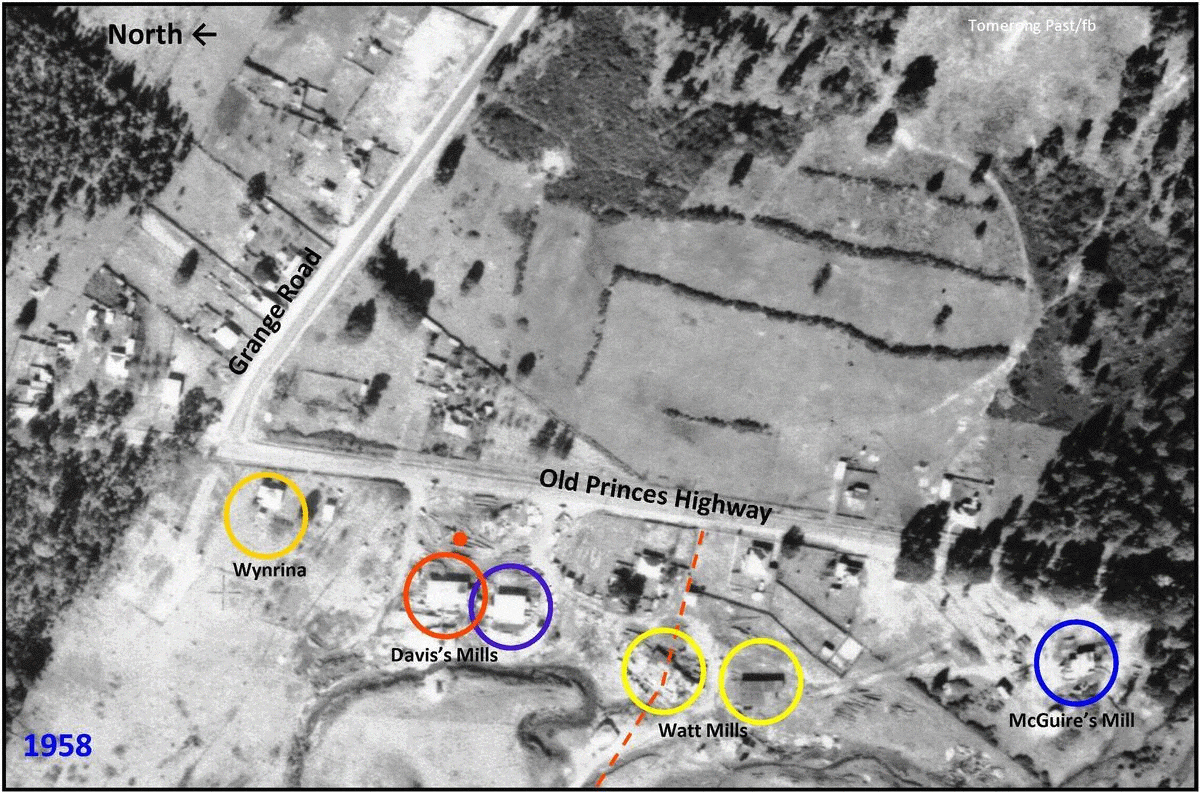
Back to Top See the More Information page for additional information. The Next Page covers School Days.
